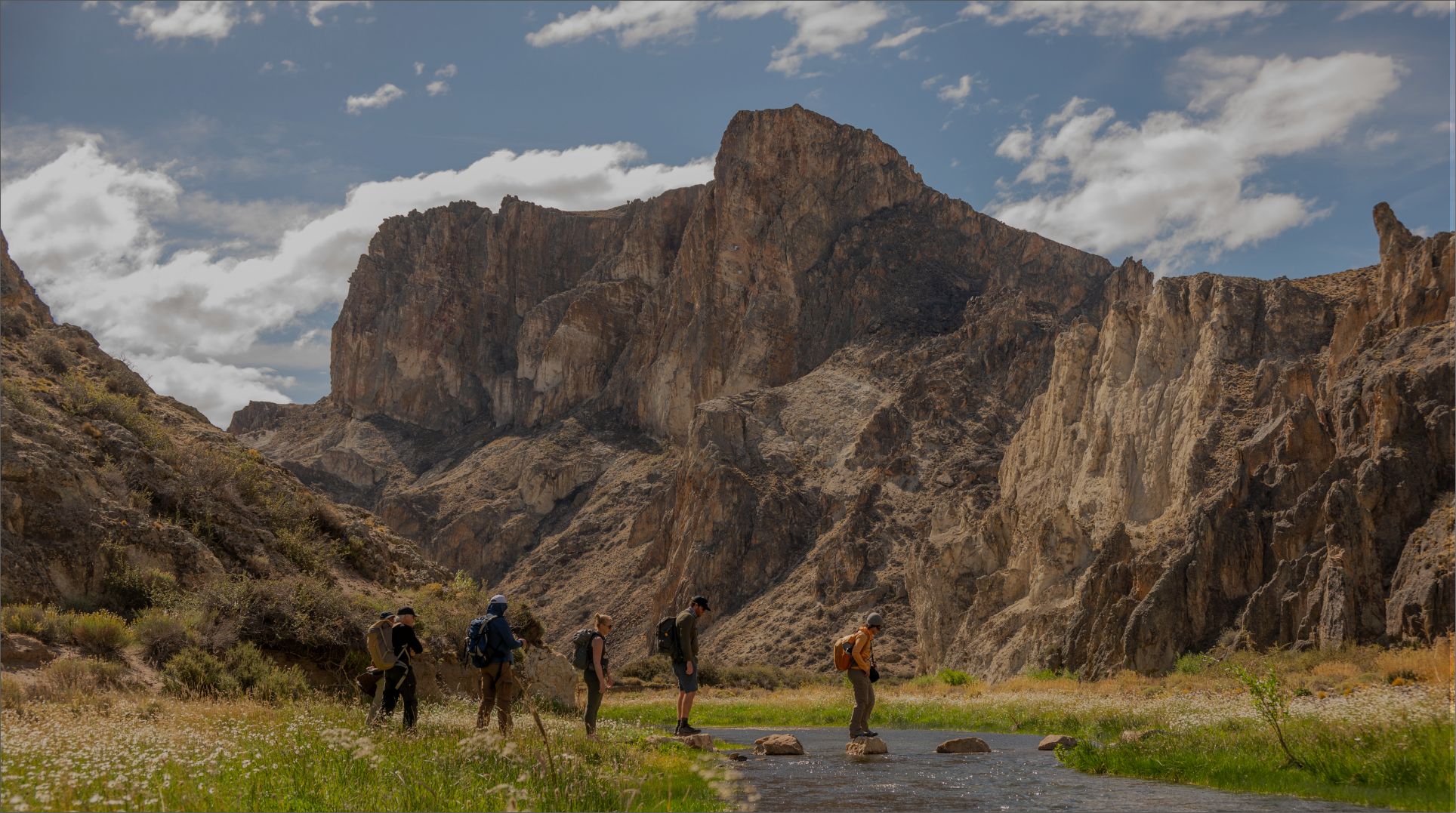The Patagonia Park region includes the National Park and three public access areas with different conservation categories, called ‘portals’ or ‘entrances’, which protect plateaus, steppes, canyons, and wetlands. In this impressive landscape, visitors can observe a variety of wildlife inhabiting the area including lesser rheas, guanacos, condors, and pumas.
LOREM IPSUM - DOLOR SIT AMET

The Santa Cruz region’s Patagonian Steppe, which is partially protected by Patagonia Park, has not been spared from the extinction and population reduction processes that have affected the rest of Argentina. The huemul and the southern river otter have disappeared at a regional level, while the Wolffsohn’s viscacha, coypu, and austral rail have undergone local extinction, reducing their numbers and disrupting population connectivity. Other species such as the puma, guanaco, lesser rhea, and Andean condor, which are key representatives of Patagonia’s terrestrial wildlife, have also experienced significant declines in their populations.


Since 2011, Rewilding Argentina has been working alongside other nature conservation organizations to extend the protected area of Patagonia Park Argentina and restore its ecosystems through rewilding efforts. Additionally, we strive to support wildlife and local communities by promoting economies based on nature tourism.
Beyond the mountain range lies the Patagonia National Park in Chile. Our vision is to create a vast park and cross-border /binational nature tourism attraction, transcending human borders prioritising the conservation of the natural and cultural heritage of Patagonia.

The Santa Cruz region’s Patagonian Steppe, which is partially protected by Patagonia Park, has not been spared from the extinction and population reduction processes that have affected the rest of Argentina. The huemul and the southern river otter have disappeared at a regional level, while the Wolffsohn’s viscacha, coypu, and austral rail have undergone local extinction, reducing their numbers and disrupting population connectivity. Other species such as the puma, guanaco, lesser rhea, and Andean condor, which are key representatives of Patagonia’s terrestrial wildlife, have also experienced significant declines in their populations.
The ecosystem has been significantly affected by changes in crucial ecological processes, including predation and migrations. Our objectives in arid Patagonia are to reintroduce species that are currently missing and enhance the population of species that have been greatly reduced. Our ultimate aim is to restore the typical ecological processes of the steppe.
For more information
https://www.rewildingargentina.org/proyecto-patagonia
Historia del Parque Patagonia Argentina
Rewilding Argentina, with the support of the Freyja Foundation, is dedicated to restoring the ecosystem in Patagonia Park Argentina. They achieve this by monitoring and managing wildlife, restoring environments, eradicating exotic species, and spreading awareness about their efforts to recover key species in the area.
The Santa Cruz region’s Patagonian Steppe, which is partially protected by Patagonia Park, has not been spared from the extinction and population reduction processes that have affected the rest of Argentina. The huemul and the southern river otter have disappeared at a regional level, while the Wolffsohn’s viscacha, coypu, and austral rail have undergone local extinction, reducing their numbers and disrupting population connectivity. Other species such as the puma, guanaco, lesser rhea, and Andean condor, which are key representatives of Patagonia’s terrestrial wildlife, have also experienced significant declines in their populations.
The ecosystem has been significantly affected by changes in crucial ecological processes, including predation and migrations. Our objectives in arid Patagonia are to reintroduce species that are currently missing and enhance the population of species that have been greatly reduced. Our ultimate aim is to restore the typical ecological processes of the steppe.
For more information
https://www.rewildingargentina.org/proyecto-patagonia
We are currently working towards recovering the following species in Patagonia Park, Argentina.
The Santa Cruz region’s Patagonian Steppe, which is partially protected by Patagonia Park, has not been spared from the extinction and population reduction processes that have affected the rest of Argentina. The huemul and the southern river otter have disappeared at a regional level, while the Wolffsohn’s viscacha, coypu, and austral rail have undergone local extinction, reducing their numbers and disrupting population connectivity. Other species such as the puma, guanaco, lesser rhea, and Andean condor, which are key representatives of Patagonia’s terrestrial wildlife, have also experienced significant declines in their populations.
The ecosystem has been significantly affected by changes in crucial ecological processes, including predation and migrations. Our objectives in arid Patagonia are to reintroduce species that are currently missing and enhance the population of species that have been greatly reduced. Our ultimate aim is to restore the typical ecological processes of the steppe.
For more information
https://www.rewildingargentina.org/proyecto-patagonia
Rewilding Patagonia
En el Parque Patagonia Argentina, el equipo de Rewilding Argentina, con el apoyo de Freyja Foundation, trabaja en la recuperación de las especies clave del ecosistema mediante el monitoreo y manejo activo de animales, la restauración de ambientes, la erradicación de especies exóticas y la divulgación.




